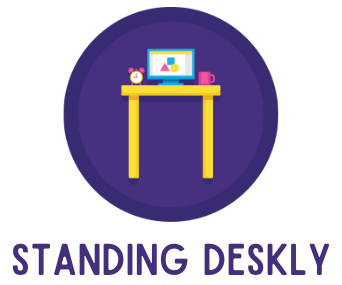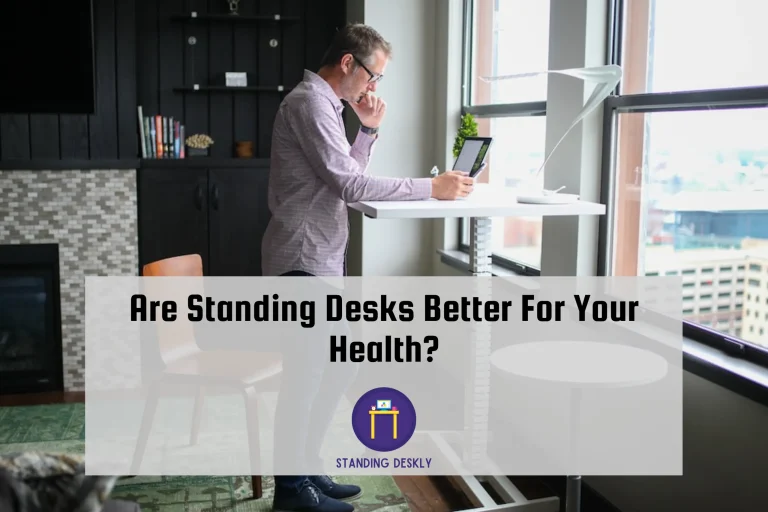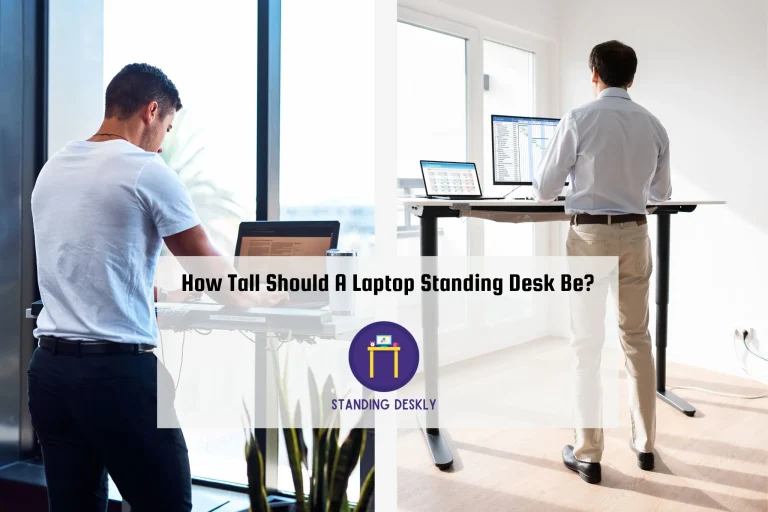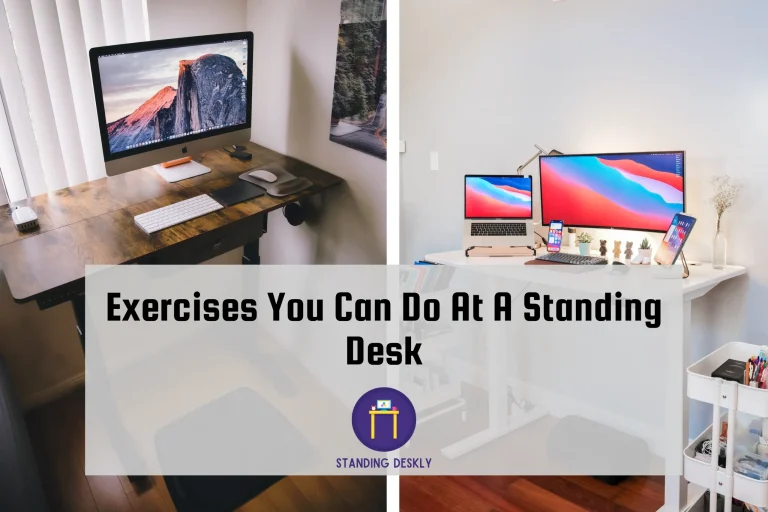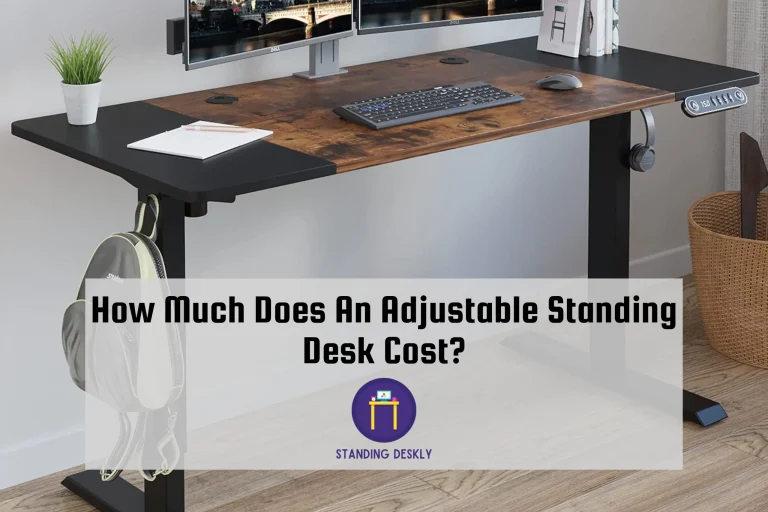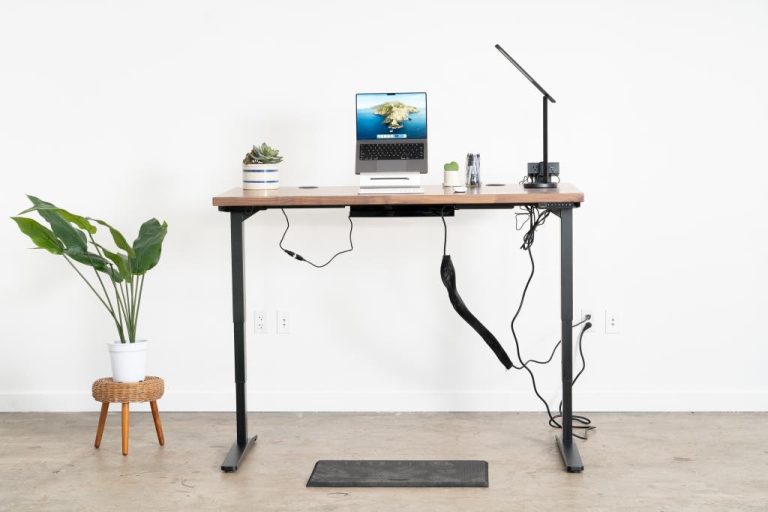Why Do My Feet Hurt At A Standing Desk?
Do you find yourself suffering from foot pain after standing at your desk? As more and more of us switch to electronic desks and try to create healthier work habits, it’s natural to think that standing up while working would be a good idea. However, if you aren’t careful, standing at your desk can cause problems with your feet and ankles. In this article, we’ll explore why your feet hurt when using a standing desk and how you can make sure you stay comfortable. We will discuss the causes of foot pain, improper posture and shoes, proper ergonomics for your desk setup, how long you should stand at a standing desk, and how to make it more comfortable. By the end of this article, you’ll have all the tips and tricks needed to optimize your standing desk setup so you can keep enjoying healthy work habits without experiencing any foot pain!
Causes of foot pain
Foot pain can be an annoying and uncomfortable experience when standing for long periods of time. It can be caused by a number of factors, including poor posture and inadequate footwear. The most common causes of foot pain when standing are lack of arch support, ill-fitting shoes, overpronation, flat feet, plantar fasciitis, and Morton’s neuroma.
Lack of arch support is one of the most common causes of foot pain when standing at a desk. Arch support helps distribute your body weight evenly across your feet and supports the arch of your foot. If you are not wearing proper shoes with adequate arch support, the pressure from your body weight will be concentrated on certain parts of your feet more than others throughout the day. This can lead to a lot of strain on the muscles in your feet and cause them to become sore and painful.
Ill-fitting shoes can also cause discomfort as they will not provide enough room for your toes to move freely or enough cushioning to absorb shock while walking or standing. Shoes that are too tight will restrict blood flow in your feet, which can contribute to fatigue and even injury over time. Similarly, shoes with improper sole material (such as those made from hard plastic) will not absorb shock efficiently either, leading to further discomfort while standing or walking around at work.
Overpronation is another common source of foot pain while standing at a desk or walking around. Overpronation occurs when you roll your feet inward too much as you walk, which puts extra pressure on the muscles in the inner part of your feet and ankles, which leads to soreness and eventually injury if left unchecked for too long. Wearing properly fitting shoes with good arch support can help prevent this by improving your balance while walking or standing at a desk all day.
Flat feet can also lead to discomfort after prolonged periods of time spent standing up due to the lack of proper cushioning that would normally be provided by an arched sole structure in normal, healthy feet. Plantar fasciitis is another condition that commonly affects people who spend most days on their feet. It is caused by inflammation in the connective tissue between the heel bone and toe bones, which leads to severe heel pain after prolonged periods spent standing up without any sort of break or rest period throughout the day. Morton’s neuroma is another condition characterized by nerve swelling between two nearby toe bones, which leads to sharp pain radiating through both toes during movement like walking or running. It can easily become exacerbated after spending long hours at a desk without taking regular breaks throughout the day, either sitting down or raising one’s heels off the ground periodically for relief from pressure build-up in these sensitive areas on top of one’s foot soles.
These are just a few of the many potential sources of foot pain after spending extended periods of time at a standing desk that require attention if left unchecked for too long due to potential injury risks; thus, it is always important to ensure that one wears adequate supportive footwear with good cushioning properties as well as takes necessary breaks throughout their workday to avoid aggravating existing conditions like plantar fasciitis or Morton’s neuroma.
improper posture and shoes
One of the most common reasons why your feet can hurt while working at a standing desk is due to improper posture and shoes. When you stand, your body weight needs to be equally supported by both legs with your hips and shoulders aligned in order to avoid any strain on the lower back or feet. If you’re wearing inappropriate footwear, such as flip-flops or high heels, then this can cause excessive stress to be placed on the feet and lead to discomfort or even pain.
Having shoes that are too tight or have no cushioning can also cause aching in your feet after prolonged periods of standing. Shoes that offer arch support and have memory foam insoles will help reduce pressure on the feet and improve comfort levels. It’s also important to keep in mind that some people may require orthotic inserts for their shoes in order to ensure proper alignment of the foot when standing.
Finally, it’s essential that you maintain good posture while at your standing desk in order to prevent foot pain from occurring. Make sure that your head is level with the ground and keep your core engaged throughout the day by using small movements to shift weight between both legs regularly. This will help prevent pressure from building up in one area of the foot, which could lead to soreness and fatigue later on.
Proper desk ergonomics
Proper desk ergonomics is key when using a standing desk. To reduce the risk of foot pain and other musculoskeletal disorders, it’s important to make sure your workstation is optimized for both sitting and standing. To start, make sure the height of your desk is adjusted to the correct level – your elbows should be at a 90 degree angle while typing. The keyboard should also be within an easy reach and at the same level as your elbows. Additionally, you should use an adjustable chair or stool to help support your feet while you are standing. This will allow you to adjust the height of your feet as you change positions throughout the day and will also help keep them supported in one place for long periods of time. Finally, keep in mind that if you are wearing high-heel shoes or have flat feet, this can contribute to foot pain so it’s important to wear supportive shoes with good arch support or consider investing in a pair of insoles with arch support.
Why does standing make my feet hurt?
Standing for long periods of time can be uncomfortable and cause pain in your feet. This is because standing puts extra pressure on the muscles, tendons, ligaments, and bones in your feet. As you stand, your body weight shifts from one foot to the other, and your feet must constantly adjust to support the weight. This continual shifting of weight places strain on the muscles, tendons, and ligaments in the feet, which can lead to discomfort and pain. Additionally, standing often causes swelling in the feet due to a decrease in circulation as well as an accumulation of lactic acid, which can also cause pain. Standing for long periods of time can also cause fatigue in your feet, which further contributes to a feeling of tiredness or pain. The combination of these factors makes it difficult for people who are standing all day to remain comfortable and free from foot pain.
How Long Do I Have to Stand at a Standing Desk?
When using a standing desk, it is important to pay attention to how long you are standing for at any given time. This is because prolonged and frequent standing can lead to fatigue and strain on your feet, ankles, and legs. Normally, you should stand for 30–60 minutes at a time and then take regular breaks—at least 10 minutes of sitting—in order to give your feet a break from the standing posture.
It’s also important to switch up the position of your legs while standing. For example, swaying side-to-side or shifting your weight back and forth can help keep your muscles active, as opposed to keeping them in one stationary position for too long. Additionally, consider investing in an anti-fatigue mat; this type of mat helps reduce strain by providing cushioning and support while you stand.
Making sure that you have proper ergonomics is also essential; ensure that your keyboard and mouse are placed so that they don’t require too much reaching or stretching from your wrists or arms. Your monitor should be at eye level, with the top edge of the screen slightly below eye level so that you are looking slightly downwards without having to tilt your head back or forward.
Finally, make sure that you have comfortable shoes when working at a standing desk. Wearing shoes with arch support and cushioned soles can help alleviate pressure on the feet while still keeping them steady on the ground throughout your work session.
How Can I Make My Standing Desk More Comfortable?
Making your standing desk comfortable is key to avoiding foot pain. Here are some tips for getting the most out of your standing desk:
- Invest in a good anti-fatigue mat. This will provide cushioning and support for your feet, helping to reduce fatigue and stress on the lower body.
- Make sure you adjust your desk height correctly—not too low or too high—so that your elbows bend at a 90-degree angle when you type, write, etc. This will help keep your posture correct and alleviate any strain on the feet.
- Wear comfortable shoes with arch support and cushioning, as well as shock absorption in the heel area. Shoes with a low heel can also help to alleviate foot discomfort while standing.
- Take regular breaks from standing, alternating between sitting and standing throughout the day to give your feet a rest from prolonged periods of standing still. Try using a timer to remind yourself when it’s time to switch positions!
- Move around during standing breaks—simple activities like stretching, walking around, or even doing some simple exercises can help you stay energized for longer without putting unnecessary stress on your feet and legs.
- Change up your stance every now and then by shifting weight from one foot to another or placing one foot slightly higher than the other on an elevated surface (like a step stool). Doing this will help improve circulation and keep your feet from getting sore from long periods of standing still or other static positions.
Conclusion
In conclusion, standing at a desk is a great way to boost energy and productivity, but it can be hard on your feet if you don’t take the necessary precautions. Foot pain can be caused by many things, including improper posture and shoes, an improper desk setup, and simply standing for too long. To make sure your feet aren’t hurting during your workday, make sure to have proper ergonomics in place. Wear comfortable and supportive shoes that fit properly, and ensure that your posture is correct when standing. Also, remember to not stand for longer than an hour at a time, as this can lead to fatigue and exhaustion. Finally, optimize your desk setup to make it as comfortable as possible for you so that those long hours at the office won’t feel like torture!
Hey there!
I hope you’re enjoying the article you’re reading! I value your feedback and would love to hear your thoughts on how to improve it. If you have any suggestions, please feel free to send an email at editorial@standingdeskly.com along with the article URL.
Thank you for taking the time to help me improve my content. Your suggestions are greatly appreciated!

I’m the author and developer of Standingdeskly, the go-to site for standing desk enthusiasts. I provide comprehensive reviews of standing desks along with office setup tips. Combining years of research and personal experience, our goal is to make it easy for you to find the perfect standing desk tailored to your needs.
